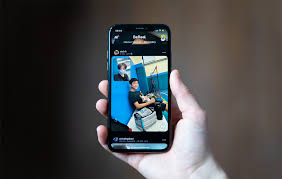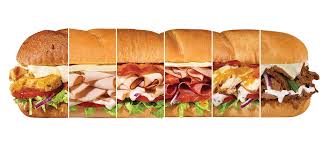The “Be Real” App: A Revolutionary Shift in Social Media

way. That app is Be Real. It challenges the curated, filtered versions of reality that have become commonplace on platforms like Instagram, Facebook, and TikTok, offering users a chance to share unfiltered, spontaneous moments from their lives. But what exactly is the Be Real app, and how does it differ from traditional social media? Let’s take a deeper look at its features, rise to popularity, and its impact on social media culture.
What is Be Real?
Launched in 2020 by French entrepreneurs Alexis Barreyat and Kevin Perreau, Be Real is a mobile app designed to encourage users to share real, unfiltered moments of their lives. It was created in response to the increasing trend of heavily edited, staged, and curated content seen on most social platforms. Be Real’s primary goal is to foster genuine, unscripted interactions between users, offering a refreshing break from the often-polished persona that social media influencers and everyday users alike tend to project.
The app is relatively simple and operates under one key rule: You only get one notification per day at a random time, prompting you to take and share a photo within a two-minute window. The twist? The app uses both the front and back cameras of your phone, allowing your followers to see not only what you’re doing but also your expression or reaction as you capture the moment. Users cannot upload photos from their gallery or edit them in any way. This emphasis on immediacy and authenticity sets Be Real apart from other platforms, where users are often encouraged to post their most flattering or curated content.
Key Features of Be Real
- Daily Notification and Two-Minute Window: The most unique feature of Be Real is the daily prompt. At a random time each day, users receive a notification telling them it’s time to “be real.” They then have exactly two minutes to capture a photo using both their front and back cameras. The randomness of the notification means that everyone is encouraged to share whatever they are doing at that precise moment, whether they’re at work, relaxing at home, hanging out with friends, or in an entirely mundane situation.
- Unfiltered Content: One of Be Real’s main selling points is its commitment to unfiltered content. Unlike other social platforms where users can enhance their photos with filters, editing tools, or heavily curated environments, Be Real encourages users to share content exactly as it is. There’s no retouching, no filters, no carefully arranged settings – just real-life moments.
- No Likes, No Followers (Initially): Be Real focuses on building a more personal, authentic social network. While the app does allow users to have friends (who they can follow), the content they share is not based on likes or followers. This creates a less competitive and less pressure-filled environment than other social media apps, which often encourage users to accumulate as many likes and followers as possible.
- Reacting to Posts: Users can react to their friends’ posts with “RealMojis,” which are custom emoji reactions that allow users to express themselves in a fun and engaging way. The feature makes it easier to communicate quickly and emotionally with your friends, without the need for long comments or likes.
- Explore Section: The Explore section of the app shows posts from users around the world, provided they’ve shared their posts publicly. While most posts on Be Real are shared with friends, this feature allows users to see how others are using the app and sharing their real, unscripted moments, offering a glimpse into the everyday lives of people from different cultures and backgrounds.
The Rise of Be Real
Be Real’s journey to popularity can be attributed to its ability to tap into the growing desire for authenticity in social media. As platforms like Instagram and TikTok grew in popularity, many users began to grow tired of the constant pressure to present an idealized version of themselves. The pandemic, too, played a role in fostering a sense of shared, unfiltered moments – as many people turned to social media not just for entertainment but for connection during times of isolation.
In contrast to polished, highly edited posts, Be Real provided an answer to the growing desire for realness. It quickly gained traction, especially among younger users who were already dissatisfied with the overly curated nature of traditional social media. The app reached 10 million monthly active users by 2022 and continued to grow steadily into 2023, reaching more than 20 million monthly active users by the end of the year.
One of the app’s standout features was its ability to go viral through word of mouth. Its unique concept caught the attention of influencers, celebrities, and the media, helping to spread the word and attract even more users. Be Real’s success shows that people are increasingly looking for authenticity in a world where social media has become synonymous with superficiality and perfection.
Why Be Real is Different from Other Social Media Apps
- Encouraging Authenticity: Be Real takes a stark departure from the visual culture of traditional social media platforms, where the goal is often to impress and outdo others. Its focus on raw, unfiltered content helps reduce the stress and anxiety that comes with curating the perfect post. For instance, on Instagram, users often edit photos or stage shots to ensure they look their best, but with Be Real, the concept is to share moments exactly as they happen, with all their imperfections.
- Limiting Posting Frequency: Unlike Instagram, Facebook, or TikTok, where users can post as often as they like, Be Real only allows one post per day. This limitation means that users can’t feel the need to constantly update their profiles, reducing the pressure to perform and allowing for more genuine interaction.
- No Followers, Just Friends: While Be Real allows users to add friends, there are no public follower counts, making it a less competitive environment. The app doesn’t reward users with likes or shares, which makes it feel more personal and intimate. This also addresses the issue of social media “influencers,” as everyone is on the same playing field – simply sharing their real lives.
- No Focus on Vanity Metrics: The app’s lack of likes or follower counts makes it feel less like a popularity contest. While other social media apps use metrics such as likes, shares, and comments to determine social currency, Be Real’s approach is all about sharing moments without the pressure of gaining validation. In this sense, Be Real pushes back against the dopamine-driven feedback loops created by other social media apps.
The Impact of Be Real on Social Media Culture
- Challenging the Influence of Filters and Editing Tools: As Instagram and TikTok grew, the use of filters and editing apps became standard practice. People started posting perfectly curated and often unattainable versions of their lives, which led to increased feelings of inadequacy among users. Be Real combats this by discouraging editing and filters altogether. It provides a space where people can appreciate the beauty in authenticity and imperfections, rather than striving for an unattainable ideal.
- Privacy and Mental Health: Mental health issues related to social media, such as anxiety, depression, and low self-esteem, have been widely discussed in recent years. Be Real’s approach of reducing social pressure, promoting less screen time, and fostering genuine interactions has been seen as a positive change for mental health. Since users are not constantly comparing themselves to others or worrying about how they look, Be Real provides a less toxic environment where people can feel free to simply exist.
- The Rise of the “Authenticity” Trend: Be Real is part of a broader cultural trend that values transparency, mental wellness, and authenticity. Other platforms have taken notice, and Instagram, for example, has introduced more tools to promote authentic content, such as removing the visible likes count and introducing “Close Friends” stories to foster more intimate sharing.
Potential Challenges for Be Real
While Be Real has certainly made waves in the social media scene, it’s not without its challenges. For one, the pressure to always be authentic and the fact that users must post once per day can sometimes feel like a chore. Additionally, the limited posting window of two minutes may feel restrictive for some users who might not be able to capture the perfect moment within such a short time frame.
Furthermore, as Be Real grows, there are concerns that it may eventually fall victim to the same issues that other social media platforms face, such as commercialization, influencer culture, and the urge to create highly curated content despite the platform’s original ethos of authenticity.
Conclusion
The Be Real app represents a refreshing shift in the social media landscape. In an age where users are often bombarded with idealized versions of other people’s lives, Be Real challenges the notion that social media must be filtered, curated, and meticulously planned. Instead, it encourages authenticity, spontaneity, and imperfection. It’s a social network that focuses on real connections rather than superficial metrics of popularity.





